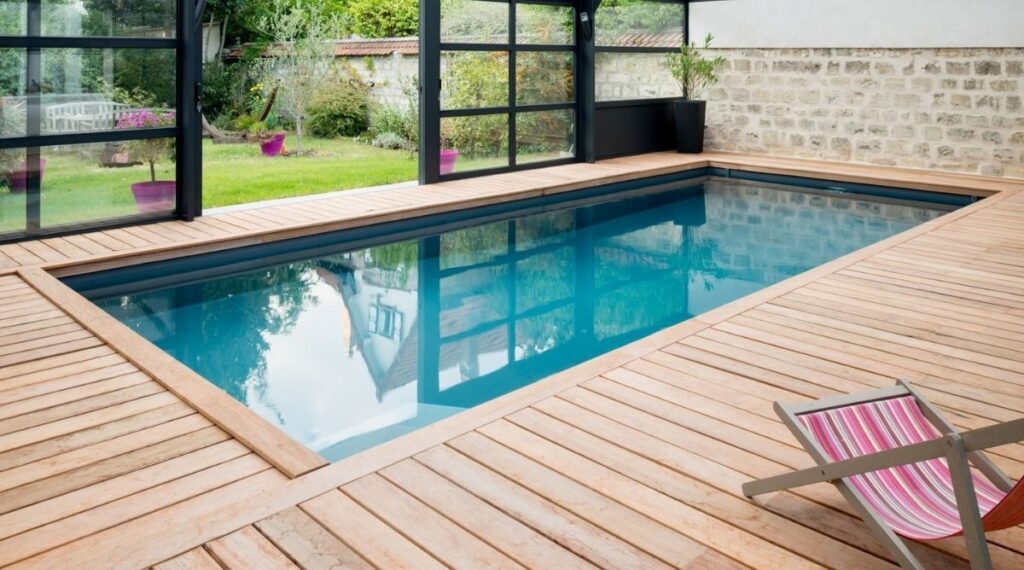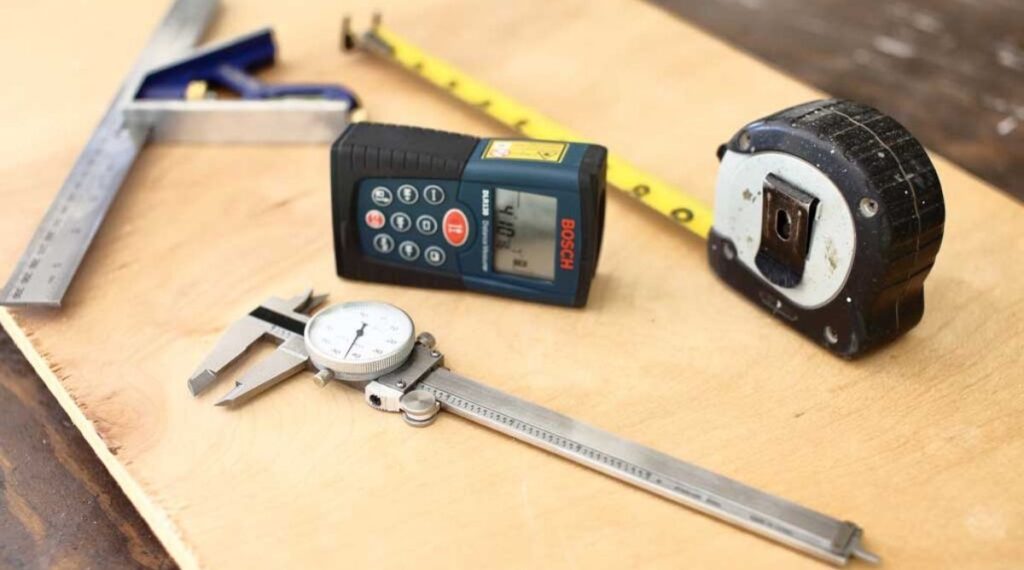How Long is 20 Feet? 11+ Things That Are 20 Feet Long
Ever wondered how long is 20 feet in a real sense? It might seem like just another number, but understanding this distance can make a huge difference in various aspects of life, from interior design to outdoor activities.
Imagine standing at the edge of a swimming pool, measuring the distance from one end to the other. What if I told you that 20 feet is about the same length as four average-sized adult men lying head to toe?
We’ll explore exactly how long 20 feet is, provide relatable comparisons, and discuss why knowing such measurements matters in various contexts. You’ll have a clearer picture of this seemingly arbitrary distance and how it relates to your daily experiences.
How Long Are 20 Feet Visually?
Visualizing 20 feet can be quite enlightening, especially when you consider its practical applications in everyday life. For reference, 20 feet translates to about 6.67 yards or 6.1 meters, a distance that often surprises people when they see it laid out in real-world contexts.
Imagine standing next to a standard sedan; the average car is around 15 to 16 feet long. This means that 20 feet stretches beyond the length of most vehicles, giving you a tangible sense of scale.
Two basketball hoops stacked together would reach the impressive height of 20 feet. This dimension also matches the height of some two-story homes, showcasing how substantial this distance can feel when viewed vertical.
It’s in sports, architecture, or even landscaping, understanding how high 20 feet truly is can transform your perspective on space and dimensions, making it easier to appreciate the vastness of our surroundings.
How to Measure 20 Feet Accurately?
To measure 20 feet accurately, several tools and techniques can elevate your precision. A measuring tape, ideally 25 feet long, is a classic choice for any construction project or formal planning. It allows for straightforward measurement, ensuring you don’t run short on length.
For larger outdoor spaces, consider a laser distance meter; these devices provide instant readings and are particularly effective when measuring distances in cluttered or hard-to-reach areas.
If you find yourself without tools, estimating 20 feet by walking can be surprisingly accurate. The average adult step spans about 2.5 feet, meaning you would take approximately eight steps to cover the distance. This method is not only practical but also gives you a physical sense of space, which can be invaluable in outdoor settings.
When you’re laying out a garden or marking boundaries, understanding how big is 20 feet through these varied methods enhances both your confidence and accuracy in measurements.
Things That Are 20 Feet Long
Grasping the concept of 20 feet length can be simplified by looking at everyday items and constructions that are around that length. Let’s take a look at some relatable examples to better illustrate this measurement in real-life contexts.
- Length of Four Park Benches
- Delivery Trucks
- Standard School Bus Length
- Commercial Awnings
- A Giraffe
- Indoor Swimming Pool Width
- The Flagpoles
- Ladders
- Shipping Containers
- Measuring Tools
- Marine Life Examples
Length of Four Park Benches
When considering the length of four standard park benches, we find ourselves with a total of 20 feet, a measurement that speaks volumes about the design of social spaces in urban landscapes. This seemingly simple arrangement can transform pedestrian pathways and public parks into inviting hubs for community interaction.

Imagine strolling through an urban square, where these benches not only provide a comfortable resting spot but also encourage conversations among strangers, fostering a sense of belonging.
A distance of 20 feet allows for intimate gatherings without feeling cramped, creating a welcoming atmosphere. By thoughtfully placing these benches, urban planners can enhance the overall experience of public spaces, making them more than just thoroughfares but vibrant areas for relaxation and connection.
Delivery Trucks
Modern box trucks, typically measuring 20 feet in length, serve as the backbone of urban logistics, striking a delicate balance between cargo capacity and maneuverability. With a cargo area designed to maximize space without sacrificing agility, these trucks can efficiently navigate bustling city streets while accommodating a significant volume of goods.

This adaptability is crucial for fleet managers who must consider not only the dimensions of their vehicles but also the complex dynamics of urban delivery. Fleet managers and urban planners collaborate to design loading zones that optimize accessibility for 20-feet trucks, ensuring that deliveries can be made promptly without disrupting traffic flow.
Standard School Bus Length
The standard school bus length, typically around 20 feet, strikes a careful balance between passenger capacity and urban navigation. This size is intentional, allowing for an efficient number of seats while still being manageable in congested city streets.

Maintaining safety standards becomes easier when the size of school buses is standardized; it allows for predictable maneuvers and helps drivers anticipate the bus’s behavior on the road. As urban areas continue to evolve, understanding the implications of a 20-feet school bus can lead to better-designed transport systems that prioritize both efficiency and safety for all road users.
Commercial Awnings
The role of commercial awnings in retail architecture, the standard 20-foot width emerges as a functional and visually appealing choice. The 20ft length provides ample coverage for storefronts while creating inviting outdoor spaces that enhance customer experience.

This generous dimension not only shelters sidewalk displays but also offers a comfortable waiting area for patrons, blending utility with charm. Balancing functionality with aesthetic appeal is paramount in commercial building design.
Awnings serve as a canvas for branding, allowing businesses to showcase their identity while providing adequate protection from the elements. By thoughtfully integrating a 20-foot awning into their design, retailers can transform their entrances into welcoming gateways that draw in potential customers and foster a sense of community.
A Giraffe
Standing as nature’s skyscraper, the giraffe (Giraffa camelopardalis) captivates with its impressive height, often stretching between 18 to 20 feet. To put that into perspective, consider how long is 20 feet: it’s roughly the height of a second-story window in most residential buildings.

This remarkable stature allows giraffes to access foliage that other herbivores simply can’t reach, effectively giving them a competitive edge in their ecosystem. Their long necks and towering frames are not just about size; they embody a natural adaptation honed over millennia.
With their unique ability to browse high treetops, giraffes play a crucial role in shaping their environment, promoting biodiversity by allowing younger trees to flourish beneath the canopy. Observing these majestic creatures in wildlife reserves or zoos offers a firsthand glimpse into the delicate balance of nature, where every inch of their height serves a purpose.
Indoor Swimming Pool Width
When considering the width of an indoor swimming pool, particularly for residential and small commercial spaces, a 20-foot width serves as a versatile benchmark. This dimension allows ample room for both recreational swimming and exercise activities, accommodating everything from leisurely laps to vigorous water aerobics.

Pool designers often recommend this standard width to ensure that users can enjoy the space without feeling cramped, fostering a more enjoyable swimming experience. To promote comfort, a 20-foot wide pool facilitates efficient use of space within the overall layout of the facility. It allows for the incorporation of proper circulation patterns and safety zones, essential for maintaining a safe environment for swimmers.
With adequate room for deck space around the pool, families can gather and socialize while ensuring that emergency exits and lifeguard stations remain easily accessible. Choosing the right width not only enhances the functionality of the pool but also contributes significantly to the aesthetic appeal of the indoor swimming area.
The Flagpoles
In the realm of residential aesthetics, flagpoles serve as striking vertical statements that elevate both the beauty and pride of any property. Standing tall at 20 to 25 feet, these flagpoles create a visual impact that is not only impressive but also symbolizes a sense of belonging and patriotism.

Imagine a flag flying prominently above a single-story structure; from a distance, the 20-foot height ensures it captures attention without overwhelming the surrounding landscape.
Proper placement and installation are crucial, as professional flag installation services emphasize adherence to established protocols, ensuring that flags are displayed respectfully and correctly. Flagpoles in residential yards and institutional grounds can foster a sense of community and shared values.
It’s showcasing national pride, commemorating local achievements, or simply adding a touch of elegance to your landscape, these structures become focal points for gatherings and celebrations. In this way, the humble flagpole transforms into more than just a pole; it becomes a beacon of identity and unity, reminding us of what we stand for.
Ladders
When considering the height of a 20-foot ladder, it’s essential to understand its versatility and application in both residential and commercial settings. This measurement, equivalent to about two stories, makes 20-foot extension ladders a staple for accessing second-story areas during maintenance or construction work.

With great height comes great responsibility. Safety regulations mandate that users fully comprehend proper ladder measurements and their limitations to prevent accidents. A 20-foot ladder should be positioned at a safe angle and secured properly to ensure stability while working at elevated heights.
By adhering to these safety practices, professionals can enhance productivity while minimizing risks, making the 20-foot ladder not just a tool but an essential ally in achieving efficient and safe work outcomes.
Shipping Containers
Standard shipping containers, particularly the ubiquitous 20-foot version, serve as a globally recognized unit that transcends borders and industries. When you ask, “How big is 20 feet?”, envision a sturdy metal box that not only holds cargo but also encapsulates the essence of global trade.

The cargo area of these containers is designed to maximize efficiency, allowing for the secure transport of goods across vast distances. Their dimensions make them an ideal reference point; they’re often used in various contexts, from architectural designs to urban planning, helping people visualize spaces in a tangible way.
The design of the 20-foot container ensures compatibility with multiple transportation methods, whether it be by ship, truck, or rail. This versatility has led to their widespread use in logistics and supply chain management, streamlining processes and minimizing costs.
As we continue to navigate a world reliant on efficient transport solutions, the 20-foot shipping container remains a steadfast symbol of connectivity and innovation in global commerce.
Measuring Tools
Professional-grade measuring tapes have transformed the construction landscape, particularly when it comes to measuring longer distances with precision. With lengths often exceeding 20 feet, these tools are designed for accuracy and durability, making them essential for contractors and builders alike.

The versatility of these tapes allows them to cater to various applications, from framing a house to installing cabinetry. What sets modern measuring tapes apart is their dual capability to display both imperial and metric measurements, accommodating a global workforce and diverse project requirements.
The advancements in materials have led to more robust and flexible designs, allowing professionals to tackle challenging environments without compromising on reliability. In a world where precision is paramount, these measuring tools have indeed become indispensable in professional construction, elevating the standards of accuracy and efficiency.
Marine Life Examples
The ocean teems with life, and some of its most captivating inhabitants are the bottlenose dolphins and various whale species, both of which can reach lengths approaching 20 feet. For instance, the bottlenose dolphin typically measures around 8 to 12 feet, but larger individuals have been recorded at nearly 14 feet, showcasing their impressive agility and intelligence.

Understanding the dimensions of these marine animals like “how long is 20 feet” can help researchers monitor their health and behavior in relation to their environment. By employing advanced boats and diving equipment, scientists can track migration patterns, breeding behaviors, and feeding habits, all crucial for maintaining healthy ocean ecosystems.
The delicate balance of these ecosystems relies on each species, from the smallest plankton to the largest whales, highlighting the interconnectedness of marine life.
Additional Considerations for 20-Foot Measurements
When contemplating 20 feet length, it’s essential to understand that this measurement transcends mere numbers; it influences various aspects of design, layout, and functionality. Here are some important considerations when measuring this length:
Safety and Planning
For 20-foot measurements, safety and planning are paramount. For construction projects, ensuring accurate measurements can prevent costly mistakes and accidents. Utilizing tools like laser distance measurers not only enhances precision but also allows for quick adjustments on-site, minimizing the risk of human error.
Incorporating safety protocols such as proper lifting techniques and clear communication among team members further mitigates risks associated with handling large materials or equipment that span such distances.
Practical Applications
In practical applications, 20-foot measurements find their utility in diverse fields, from landscaping to urban planning. For instance, when designing outdoor spaces, understanding how a 20-foot tree canopy will affect sunlight and shade patterns can influence the placement of other plants and structures.
In urban environments, this measurement can guide the spacing of streetlights or the design of pedestrian pathways, ensuring both aesthetics and functionality align.
Embracing innovative software tools that simulate these spatial relationships can empower designers to visualize outcomes before implementation, leading to more sustainable and efficient use of space.
What Does 20 Feet Look Like Next to a Basketball Court?
Standing on a standard basketball court, measuring 94 feet in length and 50 feet in width, gives you a vivid perspective of just how substantial 20 feet really is.
Imagine marking off that distance: it stretches approximately one-fifth the length of the court, a visual reminder of how quickly players dart across the hardwood.
This space is not just a number; it represents crucial moments in the game, think of a player’s three-point shot or a defender closing in on an opponent. To put it in context, 20 feet nearly spans 40% of the court’s width, giving you an idea of how much ground athletes cover in mere seconds.
Also Read How Long is 5 Inches? -(Visual Guide)
Conclusion
Grasping the concept of how long is 20 feet is essential for anyone involved in construction, design, or even everyday activities. This length translates to about six paces for an average adult or can be visualized as the height of a small tree or the length of a sedan.
Familiarity with such measurements empowers individuals to make informed decisions regarding space and layout in their environments. As you move forward with your projects, keep the significance of 20 feet in mind; it could be the key to achieving your goals.
Frequently Asked Questions
How to Measure 20 Feet by Walking?
Divide the total distance of 20 feet by the number of steps you counted. For example, if you took 10 steps to cover the distance, each step would be approximately 2 feet long.
How Big is a 20 ft Room?
A 20 ft room is not 400 square feet; it’s actually 400 square feet only if the room is a perfect square. To clarify, if a room measures 20 feet by 20 feet, then yes, you would calculate the area by multiplying the length by the width (20 ft x 20 ft = 400 sq ft).
What does 20 Feet Equate to in Meters?
20 feet is approximately 6.1 meters.
How Many Inches are There in 20 Feet?
There are 240 inches in 20 feet.
How does 20 Feet Compare to a Basketball Court?
A basketball court is 94 feet long, so 20 feet is about one-fifth of the length.







